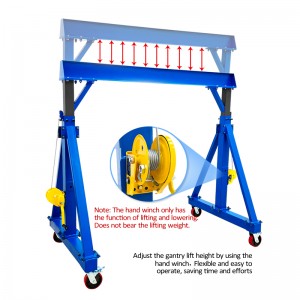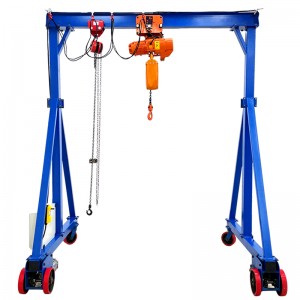The load capacity of mobile gantry cranes is generally lower compared to fixed overhead cranes. There are a few key reasons for this:
1, Stability and tipping risk:Stability and tipping risk:
1) Fixed overhead cranes are mounted to a sturdy, immovable foundation, providing excellent stability.
2) Mobile gantry cranes, with their wheeled or rail-mounted bases, have a higher risk of tipping when lifting heavy loads.
3) To maintain adequate stability, mobile cranes are typically limited to lower maximum capacities.
2, Structural design:
1) Fixed overhead cranes can be engineered with heavier, more robust structural components to handle higher loads.
2) The movable design of mobile gantry cranes requires a lighter, more compact structure, limiting the maximum load capacity.
3, Span and reach limitations:
1) Larger span and reach capabilities of fixed overhead cranes allow them to handle heavier loads.
2) The more limited span and reach of mobile gantry cranes constrains the maximum weight they can safely lift.
4, Mobility and maneuverability trade-offs:
The enhanced mobility and versatility of mobile gantry cranes comes at the cost of reduced load capacity compared to fixed overhead models.
5, To illustrate the differences:
1 )Typical mobile gantry cranes range from 2-5 tons capacity.
2) In comparison, fixed overhead cranes can often handle 5-20 tons or more.
However, the mobility and adaptability of mobile gantry cranes make them well-suited for a wide range of material handling applications, even if their maximum load capacity is lower than fixed overhead cranes. The tradeoff is often worthwhile, especially for applications where versatility and portability are critical requirements.
Post time: Oct-09-2024






